|
I wanted to give our customers and our community a full deep dive into our practices and the products that we use. It is of the utmost importance to David and I that we are transparent with our customers and that a full picture is given so that everyone can make the best possible choices for themselves and their family. I have been troubled by the transparency of other businesses and felt that it was time that we went above and beyond to exemplify our practices. I wanted to put all of this information in one place to make it quick and easy for everyone to access. The Big Picture Boundless is a 20 acre property; ten acres in mixed vegetable production and cover crop, one acre orchard, three acres in mixed outbuildings and house, and about six acres in pasture. Here is sort of a crude map from Central Oregon Irrigation District that shows our field. (I tried grabbing a photo from Google Earth, but it is about five years old and does not show our expansion) The top half of our rectangular field is ten acres (where all of the rows are), the bottom half another ten acres (approximately). The top half is where we grow all of our vegetables/fruit and cover crop. The bottom half is the pastures, orchard, outbuildings, etc. Nutrients/Amendments I want to focus on the top half for a bit. We divide the tens acres of production into 20 Blocks (Labeled 1 through 20). In a given year, the blocks will essentially alternate between cover crop and cash crop/vegetable production. So, for instance, this year all even blocks (2,4,6,8, etc) are in vegetable production, and all odd blocks (1,3,5,7, etc) are in cover crop. The exception is 20 always remains our "perennial" block and there lives our asparagus, rhubarb, echinacea, herbs, sorrel, etc. In those blocks dubbed for vegetable production, each block houses a plant family (or a few plant families). So, for instance, our rotation this year is: Block 2 alliums, Block 4 brassicas, Block 6 mixed family (chenopods, chicorium, etc), Block 8 potatoes/corn, Block 10 brassicas, Block 12 umbels, Block 14 mixed family, Block 16 asters, Block 18 brassicas All of these groupings will stay together and will move in rotation together. So next year, Block 10 brassicas will move to Block 11, and Block 10 will become cover crop. Block 12 umbels will move to Block 13, and Block 12 will become cover crop. Our farm fertility and health is based around these practices: cover cropping and crop rotation. We find it absolutely crucial to practice this level of crop rotation and cover cropping for a few reasons. Crop rotation is important because: (a) different crop families use different nutrients in the soil and growing them over and over again can either deplete soil or make it so more micronutrients and amendments must be added and (b) crop families can harbor diseases and pests and moving them frequently helps keep from a buildup of either. Cover cropping is very important to our farm specifically because (a) our soil quality is so poor (a very very sandy loam), that we are trying to increase organic matter as much and as quickly as possible, (b) it helps from our topsoil eroding in our extremely windy environment, (c) it adds nutrients back to the soil in "green manure" form, (d) an added bonus is many cover crops act as insectaries and pollinator habitats. Above are photos of some of our cover cropping areas. We are very passionate about this practice, and David has done an incredible job managing the cover crop part of the operation. Sometimes it feels like another full-time job for him. We plant rye, triticale, winter peas, and crimson clover to overwinter, we then mow and till in the crop. We then plant a non-frost tolerant but fast-growing cover crop like sudan grass or buckwheat in blocks that will be planted early the following spring so that the cover crop will "frost kill" and will lay over to protect the soil the during the winter, but be easy to work up in the spring. In blocks that won't be planted until later in the season, we plant oats. We also have some fun pollinator friendly cover crops we throw in here and there like phacelia and sunflowers. The whole point of this type of cover cropping is to work in as much biomass every season as possible. Our rye cover crop can be up to seven feet tall and our sudan grass cover crop is currently over ten feet tall. This is a lot of organic matter to add back to our very sandy soil. We do use tillage on our farm, but we try to keep it to a minimum. Hopefully only one or two passes a year. These are our most holistic practices and what we are basing our farm fertility and health on. That being said, when we moved onto this farm, it had been a conventional hay farm for at least 12 years prior. The soil was very depleted and the microorganisms severely lacking. We have found that we still need to add micro and macro nutrients to the soil every year. So, what do we do about amendments? First, we do a soil testing every fall/winter. We do a test for each of our greenhouses, the east field cover crop blocks, the east field vegetable blocks, the west field cover crop blocks, and the west field vegetable blocks; in all, we do eight different tests. Soil testing is crucial to know the right amount of nutrients to add without adding too much. Even in organic agriculture, too much organic fertilizer/amendments can be added and can create harm in the environment. After our soil tests and determining our need, we purchase a few different products and spread them ourselves with our tractor mounted amendment spreader. Our primary form of macronutrient fertility (N-P-K) is a product called Perfect Blend We use the Perfect Blend 6-3-3 which we purchase from Pratum Co-op in Madras. We buy about eight tons a year. The product is mostly chicken manure with feather meal, potash, and sulfur, and is certified organic. We have also been adding Lime to our field which helps to increase the pH of the soil and make it less acidic. We have also purchased micronutrients from Concentrates NW which specializes in organic amendments. We purchase only OMRI (Organic Materials Review Institute) certified products which include: manganese, sulfate of potash, fish bone meal, feather meal, and boron. This year, we only had to purchase feather meal for added nitrogen as our micronutrient levels have reached a more optimal level. (The video below shows a drive down the field. Notice the different blocks of vegetables then cover crop then vegetables and so on. The blocks of white flowers is a cover crop- flowering buckwheat. The "blank" spaces are spots that have been harvested already and are tilled and ready for more cover crop) Pest Control Pest control is something we are constantly adjusting. One approach that we have seemed to start taking more than using any outside medium is just not to grow certain vegetables at certain times of the season when the pests are the worst. For example, we do not grow arugula in the summer because it gets terrible flea beetle infestations, but we do grow it in the greenhouse in the spring and fall. A new approach we started using this year for insect pests specifically is insect netting. We typically shy away from buying products that just increase plastic production and end up in the landfill, but we thought we would try to treat the insect netting carefully and reuse for as many seasons as we possibly could. Essentially, insect netting kind of reminds me of pulling pantyhose over the plants using metal hoops to keep the netting off of the plant. The netting is then left on the duration of the plants life so that the insects can't get in. This has allowed us to grow crops that we used to lose to insects. For example, radishes and turnips used to get horrible root maggot, making up to 60% of them unsellable. Now, the percentage is down closer to 5-10%. As far as pest control through sprays, we do not use this very often. When we think about buying anything in this realm of thought, we use Arbico-Organics. Everything on this website is OMRI approved or natural/organic. Last year, we had a horrendous outbreak of spider mites that took out so many crops, I decided to purchase an organic insecticide called Insect Annihilator. This spray is made of rosemary oil, thyme oil, clove oil, and cinnamon oil. We do not like using sprays like this very often, as they can have negative effects on bees even though they are natural and organic and was bought just in case of emergency. We make sure to spray late in the day and avoid the flowering portion of the plants (thus avoiding the bees). We rarely spray plants and usually just take the approach of letting nature take its course. Our most commonly used pest control product is called BT or Bacillus thuringiensis kurstaki. We use the OMRI approved Monterey BT brand. Before we plant all of our transplants, we dip the trays in a mixture of fish emulsion, mycorrhizal inoculant (essentially good fungi), and BT. We started used BT predominantly to save our plants from the devastation of a pest called cutworm. Our first year farming, cutworm killed 30-40% of all of our brassica plantings. Upon talking to other organic farmers in Oregon, we were told that dipping the plants in BT is a common practice and would help save the starts. We now dip all of our starts in BT prior to planting. Here is how it works: "This biopesticide works by introducing bacterial spores and toxins into the body of the insect larvae as it feeds on foliage. These toxins quickly disrupt, and soon completely stop, normal digestive functions of the pest insect. The infected larvae will cease eating within minutes and fully succumb to the effects of the BTK and die within 2-5 days." (from the Arbico website). We try to use the least amount of "disruptors" on our farm, and hope that by building healthy soil and a healthy ecosystem over the years, we can move away from using any products at all. Weed Control For weed control, we use hands, hoes, and a cultivating tractor. Seed Purchasing Our seeds are always non-GMO and non-treated. We do buy a mix of organic and non-organic seed. We buy organic seed whenever it is available in the variety we are looking for and we buy the non-organic when it is not. I am guessing that about 50% of our seed is organic. As more and more people purchase and ask for organic though, the more and more it becomes available. Already in the five years we have been farming here at Boundless, I have seen an uptick in organic seed options. We purchase our seeds from Johnny's Seeds, Osborne, Territorial, Adaptive, and High Mowing. All of these seeds are definitely non-GMO, some seeds are hybrids and some seeds are open-pollinated. Hybrid plants merely mean that two different varieties were bred together and is very common. Our cover crop seed mostly comes as conventional, as we have a very hard time finding bulk organic cover crop seed. We hope to someday find a mini combine to be able to grow and thresh our own cover crop seeds. Chickens, Ducks, and TurkeysWe raise laying hens and laying ducks for egg sales, and meat chickens and meat turkeys for our own personal/family use. We have two coops; one that our older hens (who aren't laying so much, but we can't bring ourselves to cull) and our ducks live in, and one moveable coop that we built on top of our old broken down pick up truck. We also have two smaller "chicken tractors that we use for our meat birds and for transitioning pullets (large chicks/teenage chickens) out to pasture while they are too small to be completely out in the open (because of aerial predation). Our coops are surrounded by moveable fencing. Even with our stationary coop, we try to keep the pasture fresh and move the fence in different directions every 2 to 4 weeks. The chickens are on pasture from dawn until dusk, and at night, are locked up securely in their coops to keep coyotes and owls away. We feed our poultry the Great American Egg "Egg Layer mix" from a company called Helena. The mix is locally grown and milled, but unfortunately is not organic. It is Non-GMO, no corn, and no soy though. We have toiled over what to feed our birds. In the beginning, we would drive to the Willamette Valley to pick up pelleted organic feed. We debated over whether driving to the Willamette Valley every few months was more or less petroleum than buying non-organic local feed. We still aren't sure and are on the lookout for a better option. Our birds are also fed tons of our veggie scraps. Every day that we are harvesting, we collect the discard leaves, the lettuce cores, etc., and we give them all huge buckets of greens. In the summer, this means they are getting extra veggie scraps at least four days a week. In the winter, it means they are getting mostly kitchen scraps probably one day a week. Our chickens eat a wide diversity of food items: grains, vegetables, fruits, insects, grass, etc. I think diversity is the key to a healthy omnivore. Other Notes on Organics and our Practices We try our hardest to use the least amount of plastic on the farm, and yet still we compromise. Sometimes it feels frustrating to feel the necessity to use so much plastic. For example, we use row cover aka remay aka frost cloth. This, plus our plastic covered greenhouses, help extend our season by months and months. Without greenhouses and row cover, we would have a harvest season of probably late June to October. But with those season extenders, we harvest commercially April through November (and for our home the entire year). We also recently started using bird-netting to keep the porcupines, quail, deer, and elk out of our lettuce and chicory plantings. Over the years, we lost tens of thousands dollars in lettuce and chicories. Now, we don't lose any. And, we do not have to build any fences and can let the elk and deer migrate through at their will. We are able to use the bird netting year after year if we are careful with it. To be sustainable farmers, we also need to be financially sustainable. It is a constant balance of how to be both. We also have a couple of beehives and would love to add more. We are very conscious of making sure that the farm is an organic and friendly place for them to live. Why no certification?When I first met David, he told me that farming was his greatest act of rebellion. By that, he meant that he was not interested in participating in society in the ways we are made to believe we have to. He did not want to become a corporate machine, did not want to answer to the "man," and wanted to live in a way that felt true to himself. I feel all the same ways.
There are two reasons we do not want to certify organic: 1. It feels like the certification has been watered down. While I still believe that purchasing from organically certified farms at the grocery store is always better than conventional, there are still negative consequences large scale organic producers can have. They can use too much organic fertilizer and injure water tables, they can spray tons and tons of "organically certified sprays" and kill beneficial insects and pollinators, they can treat their workers terribly, they can use tons of single use plastic mulch and create mountains of non-recyclable waste, etc. etc. I think there are a lot more things that make a farm sustainable besides just not using chemicals. 2. We do not want to pay to prove we are not using chemicals. It feels to backwards that organic farmers have to pay to prove they are farming holistically, instead of conventional farmers paying to use chemicals on the land. We always thought that as long as we knew our customers, as long as we talked to them face to face and invited them onto our land, as long as we stayed completely transparent, we would not have to certify. We hope this remains the case. We are open to the idea of certifying in the future if we have to, but until then, we would rather you come say hi and ask us all the questions. That is why we are small scale farmers. If you have any more questions about our practices, please comment below, send us an email, find us at the farmers market, etc. We would love to answer any questions you have.
3 Comments
To the House Interim Committee On Water, I am writing to you today to ask that you please review, redefine, and reconfigure irrigation and water laws, rules, and regulations in Oregon. My name is Megan Kellner-Rode and I co-own and farm Boundless Farmstead with my husband David Kellner-Rode (along with David's mother Abby). We tend our 20 acre property in Alfalfa (just east of Bend); 10 acres in mixed vegetables and cover crops, 5 acres in pasture, 1 acre orchard, and about 4 acres mixed outbuildings. We have been with Central Oregon Irrigation District (COID) since 2017 and have about 17 acres of water rights. At Boundless Farmstead, we seed, plant, tend, and grow enough produce:
Water is critical to our lives; critical to growing food for our community, to employing ourselves and others, and to being good stewards of this land. We would consider ourselves environmentalists as much as we would agriculturalists. We know that the drought conditions are dire and that there is a wide spectrum of opinions and viewpoints when it comes to what proper allocation of water looks like. I appreciate you taking the time to read this email and consider our perspective. Last year was challenging for all agricultural growers in Central Oregon; some districts losing water as early as late July, some being on very low allotment, and everyone having to make strategic decisions about water use. I think that every year we should all be using water as wisely as possible, but this feels so important and prominent in our current (and building) drought crisis. I believe that water should be prioritized for environmental/wildlife purposes, clean drinking water, and food/farms above all else. These are our basic necessities as humans, and yet we forget. We are so willing to sell out our basic necessities for manufactured ones that we make our lands unliveable. We are greedy, we are ignorant, and we think we can buy our way to health and happiness. Last year, our farm was given 50-60% of our typical allotment of water for almost the entire season. Last year, we worked in sweltering heat all of July. Last year, we had to make decisions about what plants suffered and what plants were given the water they needed. We were lucky in getting 60% of our allotment compared to our farmer kin in other irrigation districts who dried up large parcels, paid large sums for hay and feed (that they typically grow), sold off livestock, and fallowed farmable land. This year, we are already having to truck water in to fill our irrigation ponds to water our greenhouses and plant starts because we did not have enough water to fill our ponds this winter. This year, I received word that one of our farmer friends who typically grows 20+ acres of potatoes, winter squash, and onions, will not have enough water to grow any vegetables at all. This year, we are looking at water situations more dire than last. To me, it seems there is enough water for wildlife, for clean drinking water, and for farms growing/raising/producing food and animal feed, we just need to redefine who gets water, what “beneficial use” is, and how much each patron is receiving. I have attached a map that was sent to us by COID that states we need to prove we are using our water rights “beneficially” in the areas marked with red hash marks and the yellow “x” marks (in the greenhouses). When I called and explained we grow row crops, the COID employee understood, but the way the aerial photos are taken, they need us to prove it regardless. This is as simple as having the Ditch Rider come look or taking a photo and sending it in. I am ok with having to take these extra steps to continue receiving water. I would actually be willing to do a lot more in order to continue receiving water and to prove we are using it wisely. What I find an issue in is the way beneficial use is monitored and defined. There is a property that neighbors us, owned by a person who lives out of state. They hired people to park an RV on the property for three months and water a field that mostly consisted of mullein and noxious weeds so that it looked “green.” These people watered every day, and to my knowledge, the owner has not been questioned about their beneficial use. We have people in our area who flood irrigate 20+ acres for two horses, folks who irrigate 40 acre lawns (not cutting hay or growing any crops), folks who pay people to irrigate weeds and junipers. We also have neighbors who make their living off of the land raising cattle and hay, practicing good pasture management techniques, and cover cropping. And when you fly overhead and take an aerial shot, all of these properties are “green” and “compliant.” I do not think all land is managed equally and I think it is time we start to redefine who gets to use water and who does not, and to redefine what is “beneficial use” and what is not. One of my ideas is to create a tiered system; in years where water is scarce, patrons who are growing food or feed are in the top tier and receive water first, those with hobby farms second (farms that are not feeding themselves or others), those with lawns or recreational properties like golf courses last. This way, we are ensuring that food security remains the top priority in our area. Last year, our farm received emails weekly from Oregon government agencies offering drought relief assistance (see Farm and Ranch Drought Resources Page from the State of Oregon), USDA drought relief (USDA Offers Disaster Assistance to Oregon Farmers and Livestock Producers Impacted by Wildfires and Drought), tips and tricks on how to use water more wisely (Saving water on the farm or ranch resource), etc. The burden of the lack of water for agriculture was and is glaringly obvious. Our local irrigation districts cut water from every single district; the most severe being a week on week off flow, followed by a complete shut off at the end of July (Arnold Irrigation District), and the least severe being a 60% flow for the entirety of the season to COID. Oregon has seen severe droughts in the last couple of years, and before the 2020 drought declarations every five years for the last nearly 30 years (See Governor's drought declaration ) The Oregon Water Resource Board (OWRB) states in their 100 Year Water Vision 4 goals, including
This 2017 Deschutes County Census of Agriculture shows there being nearly 1,500 farms in the county. I know for a fact that our farm is among the top five largest vegetable producing farms in Deschutes County and maybe the highest or second highest producing in the COID at only five acres in vegetable production and five acres in cover crop production. The number 1,500 does not paint an accurate picture of actual food and animal feed producing farms. As you can see by the Section “Farms by Value of Sales,” only 6% are making over $50,000 and 3% over $100,000; 46% of farms are making under $2,500 and I would assume the majority of those are receiving Farm Deferral taxes rates as well as irrigation water. This seems like a potential loss of revenue and loss of resources. According to the Deschutes Basin Board of Control (DBBC) which comprises eight Central Oregon irrigation districts, they convey water to over 7,600 farms and ranches. According to the 2017 Agricultural Census (referenced above), Crook, Deschutes, and Jefferson counties have a total of 2,501 farms. What additional 5,000 “farms and ranches'' does the DBBC serve? Why is the water being allocated to so many non-descript patrons/properties? As a side note, the fact that Exclusive Farm Use (EFU) laws allow for Golf Courses is appalling and leads an elitist agenda in a time when EFU/Farmland is so difficult to purchase for farmers, and when water is such a scarce resource. In Deschutes County, there was recently a moratorium on Cannabis grow operations with one of the top concerns being irrigation and groundwater use, and negative affect on people’s lives. I believe a similar argument can be made for the heavy resource use and the heavy chemical (fertilizer, herbicide, etc) use of golf courses. I believe that creating a moratorium on golf course creation could save irrigation water immediately. I also believe there is some poor/inconsistent/uncompromising management happening within the irrigation districts. As an example, I have asked multiple times since 2017 if the COID board could consider changing their board meeting times to a time that working people could attend or could consider running for a board position. Currently, the meetings are held on Tuesdays from 9am to 11am. Most commercial growers in the COID district are harvesting for farmers markets and wholesale customers, running farm crews, etc during those hours. The current COID board consists of all white males in or nearing retirement age, and is not a good representation for everyone in the district. I finally received a response that essentially said (in brief) that the meetings have been at the same time for 100 years and they are not willing to change them. This statement, to me, feels like the perfect example of why we are in the water predicament we are in. The irrigation system is being run by 100 year old ideas, regulations, and rules with an unwillingness to change to modern issues or circumstances. In the 1920s, we were approaching 2 billion people. In the 2020s, we are approaching 8 billion. Another example of mismanagement- every five years irrigation patrons are required to prove beneficial use. After five years, if the water is not being used properly, it is “taken away.” I have been told through the grapevine that water is not often actually taken away from properties that are not using water correctly, because all water that is taken from the property is also taken away from that irrigation district and becomes property of the state again. Recently in Central Oregon, COID, Deschutes River Conservancy, and North Unit Irrigation District (NUID) entered into sort of a grassroots pilot program called the Deschutes Water Bank. This program allows COID patrons to voluntarily lease water to patrons in NUID, and be paid to do so. This is a great program and incentive. The only problem is, the information was shared once with COID patrons, then was difficult to find after that. There is no information on the COID website (that I could find) and eventually I was able to scroll through weeks and weeks of posts on their Facebook social media page to find a brief mention. I wish these sorts of programs took a higher priority and were more accessible. Irrigation laws, rules, and regulations can be so daunting and so confusing to its patrons that people who may be willing to lease water back in-stream or to other farmers are often discouraged or dissuaded to act. Example- A farmer friend in Central Oregon shares an irrigation lateral line and a complex irrigation schedule with a few neighboring properties. Essentially they get from 2am one day of the week until 10pm the next day of the week. They all rely on each other to uphold their schedule and not to interrupt another’s schedule. This farmer told me that one of the neighbors was considering leasing a few acres of water back to the river, but was dissuaded by the other neighbors because it would make their water schedule change and they would have to reconfigure the agreement. The “use it or lose it” regulation also creates fear in the patrons, and often causes them to water land that is not productive and not beneficial. I believe many patrons would be more willing to give up water/lease partial allotment back during drought years if they knew the rules and regulations better and felt better supported by the irrigation district. Every year, I organize and execute an event called Central Oregon Fill Your Pantry. This is a bulk buying farmers market that happens in mid-November to encourage Central Oregonians to stock up on local meats, grains, vegetables, fruits, etc for the winter. This event is all about food security and food sovereignty. Last year, during the one-day event, Central Oregon farmers and ranchers collectively made over $120,000 and sold literal tons and tons of food to the community. Just our farm, Boundless Farmstead, sold over 7,000 pounds of food valuing over $16,000. This year, I have already heard that one of our largest producers will not be growing vegetables this year due to water shortages, and a number of others are looking for lands to expand grazing, ways to collaborate and grow different crops, or switching to just value-added crops because their water will be turned off in August. It is frightening and so gut wrenching to think that in its seventh year we may have to cancel. Why does the responsibility of proper water use fall on the backs of agriculturalists/farmers/ranchers? Why do the repercussions of improper water use affect farmers, wildlife, and ecosystems predominantly (at this moment)? If water is truly owned by the public in Oregon, then why when so many members of the public speak up and against the improper use of water, does it not hold merit? I am writing to you today out of desperation, out of panic, and from the heaviest heart. But, I am also writing to you out of hope. Hope that if the State can make some changes to water laws and regulations, and fast, that we may only have to endure one more season of desperation and panic and pain. I am available to share my experiences, share my potential solutions, brainstorm ideas, and listen to your feedback anytime. Thank you for your time, Want to write in? Here's who to contact?House Interim Committee on Water
Chair- Ken Helm [email protected] Vice Chair- Mark Owens [email protected] Vice Chair- Jeff Reardon [email protected] Member- Vikki Breese-Iverson (lives in Prineville) [email protected] Member- Lisa Reynolds [email protected] Member- Anna Scharf [email protected] Member- Marty Wilde [email protected] Senators Jeff Merkley (D)- [email protected] Ron Wyden (D)- Home | U.S. Senator Ron Wyden of Oregon (senate.gov) no email, must use form Oregon Water Resource Department The only email I could find was to the Executive Assistant [email protected] or you can use the form embedded in the website Chair- Meg Reeves Kathy Kihara (lives in Bend) Julie Smitherman Eric Quaempts Joe Moll Jan Lee Woody Wolfe Deschutes County Commissioners (or look up for your county!) Chair- Patti Adair [email protected] Vice Chair- Tony Debone [email protected] Phil Chang [email protected] Use this website to look up all of your legislators! First of all, accepting SNAP/EBT on your farm is not challenging, it is just a bit time consuming and tedious. But never fear! There are a lot of really amazing resources.
Just a few definitions to help get you started:
Accepting EBT on Farm I would definitely start here: The CSA Farmer's Nationwide Guide to Accepting SNAP/EBT Payments by Zenger Farm. It is invaluable in this process and I recommend reading through the whole document thoroughly! I also recommend printing the document and having it next to you while filling out the SNAP application. This resource was written in 2013, but the information regarding applying with FNS is still relevant and extremely helpful. I would follow this part of the guide to a T (predominantly the info starting on page 15). To accept SNAP benefits through EBT (Electronic Benefit Transfer) you will first need to:
Using a mobile reader to accept SNAP through EBT is not mandatory. You can use the paper voucher system and mail in the vouchers for a check. I decided it made more sense to be able to run SNAP cards (like a credit card) for our farm, rather than mailing in vouchers (and potentially discovering a customer has insufficient funds). The caveat of using the mobile reader (which connects to your phone like a square reader) is that the reader is not free and neither is the service. So, you can either choose to pay for this service, or you can apply for grant funding. There are two options for applying for grant funding for this service. Here is a snippet of an email I received from Amanda Cross of the Oregon Farmers Market Association describing those options: There are two programs out there right now to provide free EBT equipment to farmers markets and direct marketing farmers:
Next Steps and what I decided to do After researching both options, I decided to go with MarketLink. I decided to go with MarketLink because I had heard it was more time efficient to go through the third party than through the government organization. I also did not need an additional smart device and planned to use my phone. After recently revisiting the Market Link v Oregon DHS info sheet, I believe the DHS program has become more robust, and might be more worth looking into. When I applied at the beginning of the year, there were more benefits of going through MarketLink. I would suggest calling both organizations to see which might fit your needs better. The MarketLink application requires a bit of going back and forth between documents, emails, and government websites. First, you apply to see if you are eligible for the grant (this process takes very little time). If so, you will receive confirmation and a Market Link ID number via email. Once you have that, you will need to wait to continue applying for the mobile reader/app until you have your FNS Approval Number (meaning until the government approves your application for SNAP). Once you have that number, you can continue the process with MarketLink. For this part of the process, you will need to provide your Federal ID number again (business license) and the bank account information you want to use in order for the organization to pay you. This is where it gets confusing. There are four different companies you will receive correspondence from in regards to the mobile reader/app. Here is the breakdown:
Once you get past all the applications and actually get the app and reader, it is actually very easy to use and our payments always come through. Also, the folks at Novo Dia Group have been very responsive. Double Up Food Bucks for your CSA (NOT at farmer’s markets) If you are a vegetable farmer and have a CSA, you can apply to work with PNW CSA Coalition (previously PACSAC) to help your customers receive up to a $200 Double Up Food Bucks (DUFB) grant towards the cost of their CSA. You do not have to be able to take CSA to work with this organization, so skip all that headache above if you only want to use SNAP for your CSA. I received an email from Holly at PNWCSA. Here is a copy of that email: We have DUFB funding through 2023, and are already working on our plan for after that. Small caveat -- you need to join our org and we need to do the SNAP processing for your members. The reason why is that DUFB is tied to SNAP: a member can't get more DUFB than they pay in SNAP, so if, for example, a member can only pay a portion of their monthly fee because they have run out of benefits, they will only get part of their DUFB allocation, and we keep a running database on how much DUFB is left. I'm attaching last year's documentation so you can get a feeling for what it entails. We haven't done 2021 yet but it will be nearly identical. Registration to join PACSAC will be out next week so join our listserv here to get notification. FAQs: SNAP and DUFB Get set up to process SNAP (this is a checklist on having PACSAC process your SNAP/DUFB members) This looks like a wonderful opportunity, and they are very excited to work with folks all over the state. The fees for this service are:
The way the relationship works between your farm, PNWCSA, and your customer is (from PNWCSA website):
Other CSA accessibility ideas and resources Here are some additional resources to consider when thinking about food accessibility and your CSA/Market presence.
Ok, that's all I have for now folks. If you have any questions, send them my way and I will try to help you out! The Importance of Eating Locally
By Megan French, written June 2018 “When we told our youth that farming was a lowly aim compared with becoming teachers, doctors, or lawyers, what were we thinking? We need teachers for just a few of life’s decades. If we are lucky, we’ll see a doctor only a few times a year, and a lawyer even less. But we need farmers every single day of our lives, beginning to end. No exceptions.” -Barbara Kingsolver The disconnect between food and farmer, food and environment, and food and well-being disrupts our relationship with the natural world and impedes our opportunities for growth. Food is always at our fingertips, and access to food so convenient that we often forget the means to the end. We see the food as an obstacle before the end of a recipe, as a vehicle for body energy, and as a catalyst of social interaction, but do we see food as its components? As the parts that make up a single ingredient? Do we see the synthetics, the engineering, and the fossil fuels? Or alternatively, the soil, the sunshine, and the farmers who toiled over it? If we begin to think of food as the parts that create it and the system from whence it comes, then we can begin to reconnect the broken links between well-being, environment, and farmers. By eating locally, we can witness and interact with the system first hand. We can see the humus of the soil, rich with mycelium and life, or the dry and dusty particles, stagnant with toxins and chemicals. We can talk to our farmer, hear her practices, her successes, and her failures. We can observe the health and abundance of the birds and the insects and the livestock. There are four basic necessities in life: water, food, shelter, and air. We are keenly aware when most of these necessities are faulty. We are wary of unsafe and unclean water, we can feel our throats burn in times of forest fire smoke, and we feel solace when we come indoors from a cold afternoon out. But the impacts of unhealthy foods are not immediate and do not trigger us immediately. The only true way to know our food is to know the land and the people who grow it. To grow our own food or to support a local sustainable farmer, eliminates the guesswork at the grocery store, the reading of convoluted nutrition facts, and brings certainty in a life of misleadings and advertisements. This process also allows us to reconnect with one the the things most important to our lives that we have taken for granted. Eating locally can revitalize our community and our bodies. It can rehabilitate our impact on the soil, the water, and the air. It can teach us to reconnect with what sustains us. Megan French, written April 2018
Before you feel hunger, a farmer gazes over her fragile forest of vegetable starts, each the size of the thread flaring from her tattered jeans. Each delicate tendril, a testament of patience and care. Each having been hand sewn into hand sifted soil, and placed in the perfect dark, warm, and humid conditions, waiting until peering eyes detect the first cotyledons. These first leaves prompt a great migration from darkness to the light; to propagation space with lots of room and plenty of sunrays. This wisp of a plant then takes these great rays to manufacture strength from chlorophyll, improve vigor, and become the tasty nutritious calories so essential to our bodies. This meek and tender greenery is our food security for the next long cold winter. We have yet to emerge fully from this cold spring, yet a farmer must think of the next cold. Before you feel hunger, there is a farmer planning. The first seeds in the ground will be the last to be consumed; storage onions, celeriac, cabbages, and leeks. These crops are slow growing, packing nutrients, storability, and hardiness into every cell, to nourish us all winter long. The first seeds are started in February (January if one is crazy or tenacious), transplanted into the soil in April, and tended until harvest in September or October. When the plants are either consumed or safely stored until the next April, if luck holds and the rodents do not. The first couple months are filled with anxiety and eagerness. The sanguine thoughts to grow, and to grow more than the previous year, are stifled by frozen dew and fifteen degree mornings, 40 mph wind gusts that rip holes in new greenhouse plastic, and waiting for water to flow in the canals. Plant starts will inevitably freeze, flea beetles will eat holes in the arugula, and hailstones will impale freshly planted greens. But, to be a farmer is to be an eternal optimist. The farmer must purchase seeds, amendments, infrastructure and fuel, and make a guess at how hungry you will be. If the farmer is smart, she will look at records from the years past, ask markets and grocers for information, and make an educated guess of how much she can grow. If the farmer is lucky, you will tell her how hungry you will be and how much you will consume. If the farmer is fortunate, you will support her all year long. Before you make your shopping list, a farmer is making her seed purchasing list. Before you plan your weekly menu, your farmer is planning her yearly harvest. The time it takes from germination to consumption can be months to years. When the simplicity of a stop at the grocery store is broken down, the complexity of the food system is bewildering, lengthy, and elaborate: seeds, soil, labor, water, shelter, transportation, marketing, and storage. All of this adding up to the mere cents paid per pound at the grocery store. The next time you visit a grocery store, a co-op, a farmers market stand, I invite you to think of each piece of food’s story, history, and journey. Before you feel hunger, support your farmer.
Recently, I was asked to write an article for the High Desert Food & Farm Alliance's annual directory. They asked me to describe a day farming in the high desert. I tried to encompass the experience of multiple farms and their farmers.
This video describes more about the directory and my piece is below.
To steward
By Megan French This land of dusty hooves and yipping coyotes, of soaring Red Tails and darting marmots. This land where the sun is intense or fleeting, where the clouds are invisible or rumble full of thunder, where the breeze gently soothes or fiercely fights, where the nights are always cold. This land where fields are a palate swept brilliantly with wildflowers or scorched black with wildfire. This land is where we steward and where we call home. Our fingers are cracked from arid sand, our hair bleached from the desert sun, and our cheeks blush from the endless wind. We know the value of a well-used handkerchief and a well-loved dog. We know the absolute sweetness of the air after the rain soaks the sage leaves and the sun warms the Ponderosa bark, like the delicate scent of an incense burning in the adjacent room. We know the harm of a single seed of cheatgrass or an unwatched step near warming rocks. And above all, we know so deeply the importance of observation. Because to be observant, in this land, is to be resilient. Everyday we walk our fields, both looking for life, and for death. We notice the sand lilies have bloomed, and deem it spring; or the rabbitbrush bloomed and deem it autumn. We check our plants for the frost damage they almost certainly have sustained. We take note of their vigor, plunge our hands into the earth to check their roots, check the moisture, check for pests. We wish we could spend more time observing, but the time for a long day’s work started about an hour before dawn. The hens are fed (our favorites are told a story), the chicks are checked for warmth, and the whole time our sweet farm dog shadows and pays no mind at all to frantic squawking birds. Second cup of coffee and we remember a restless night’s sleep; born from the bright moon heading towards full again, the impending frost, and the long to-do list. But, no matter, because the frogs croaked a midnight orchestral melody and the owls added a back-up ensemble, eventually lulling us to sleep. The farmer is the carpenter, the electrician, the mechanic, the grower, the vet, the cook, and the poet. The farmer’s day never ends, only changes from one number on the calendar to the next. But, this is no job; there are no chores except that of calling family every weekend, there is no clock except that of a hungry belly, and there is no boss except weather and bugs and soil. There is only purpose. To steward this land, one must be resilient. But, resilience comes in many forms. To be resilient is to be chilled to the bone all day standing in front of a broken tractor or a hurt animal feeling powerless, but forging forward toward a solution. To be resilient is to be fixing fence in the dark, wanting nothing more than a kiss goodnight and a warm bed, but knowing that will come again soon. To be resilient is to grow food with care; to seed, plant, weed, water, weed, water, and harvest, and to hope to the moon that those customers show up to that rainy market. To be resilient is to know that strength lies in the quality of community, the greatness of love, and the humility of head, to continue to observe, learn, and steward. |
AuthorWrite something about yourself. No need to be fancy, just an overview. Archives
September 2022
Categories |
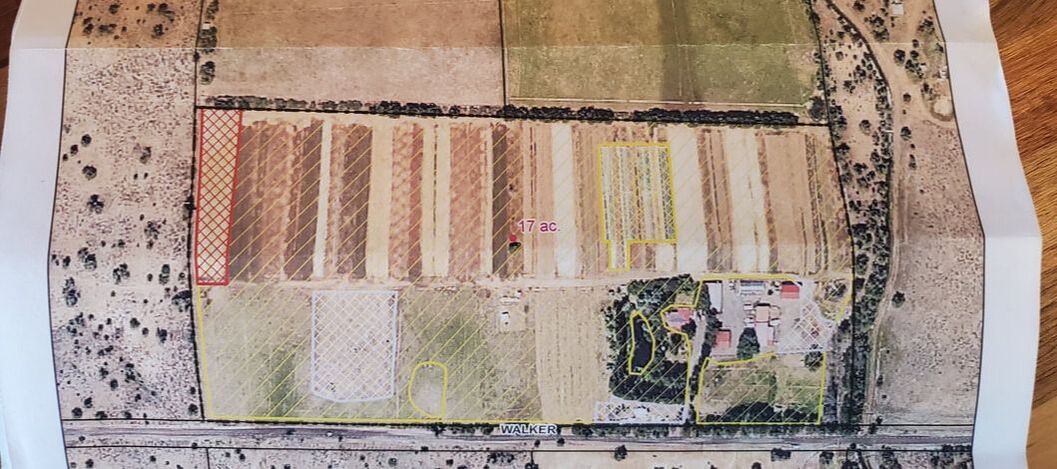
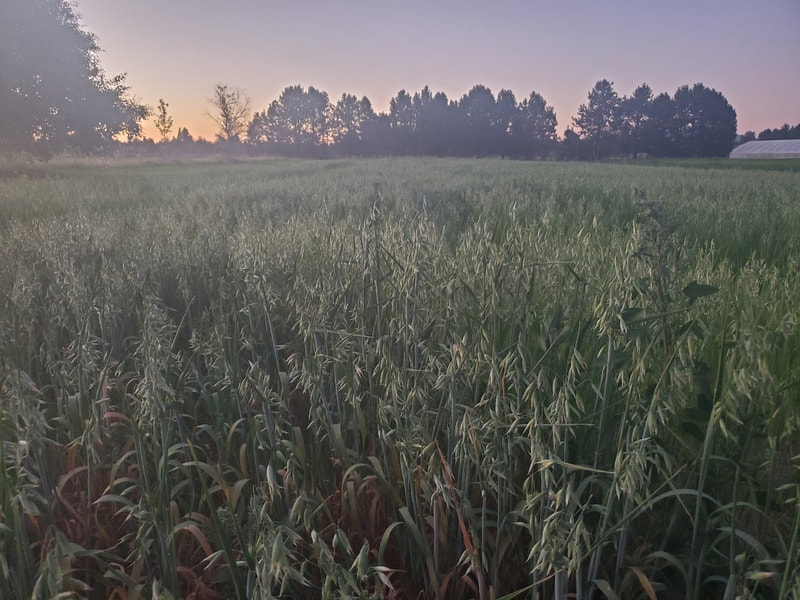
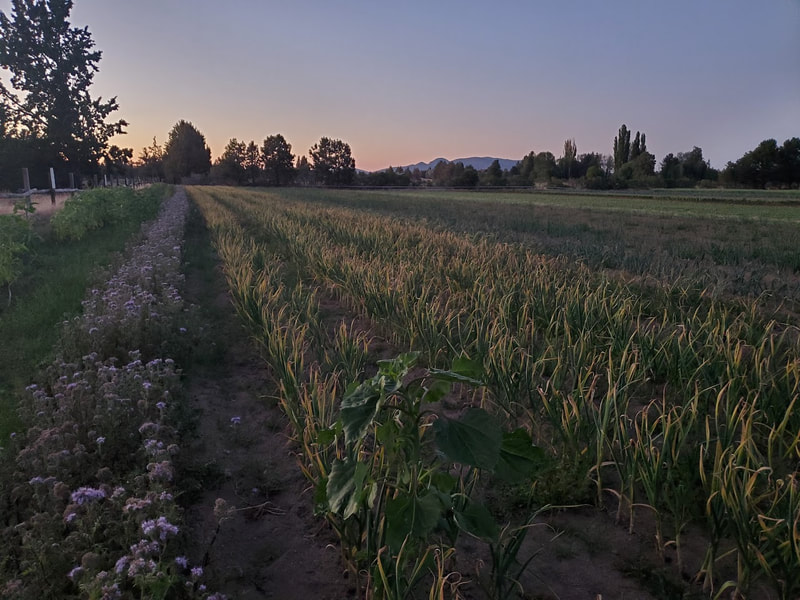
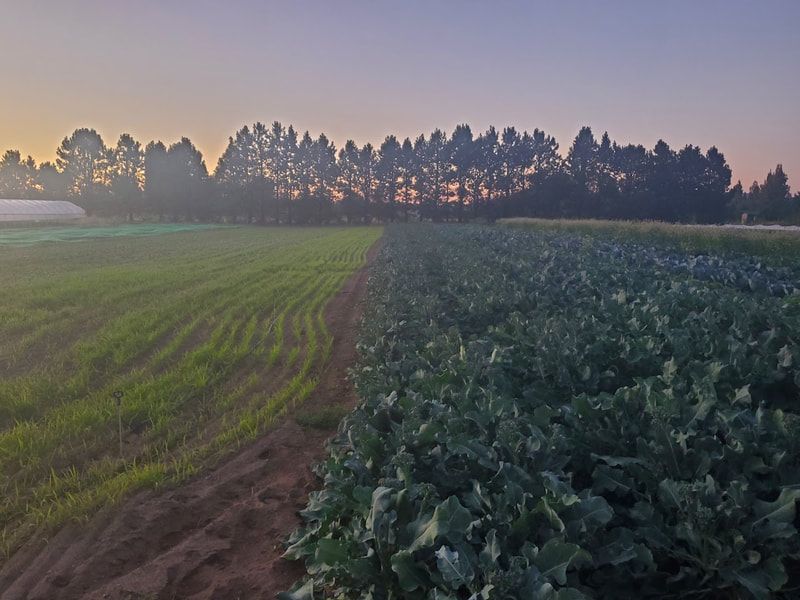
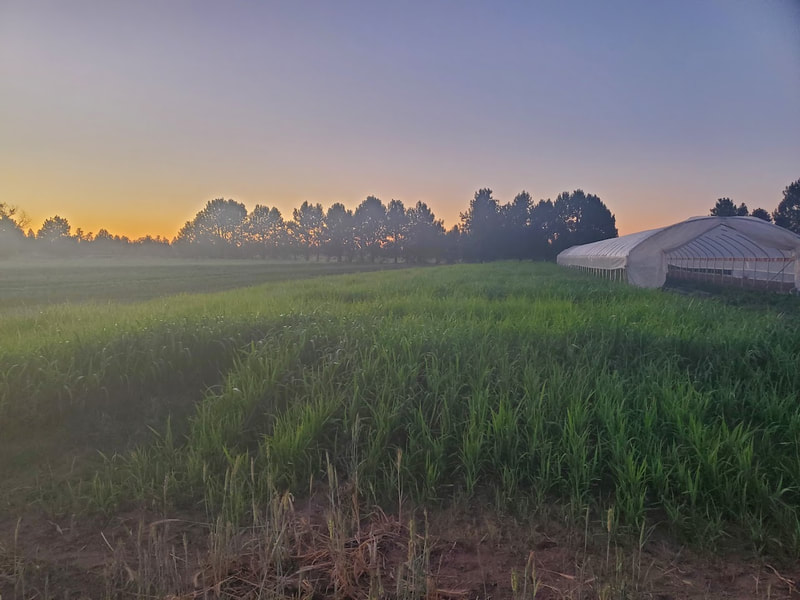
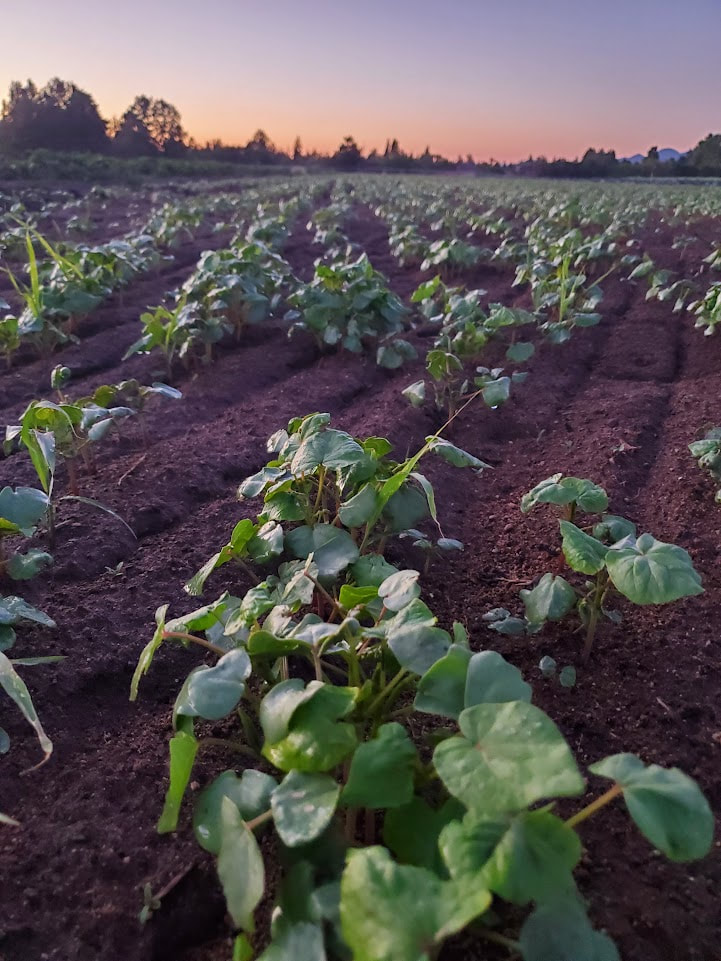
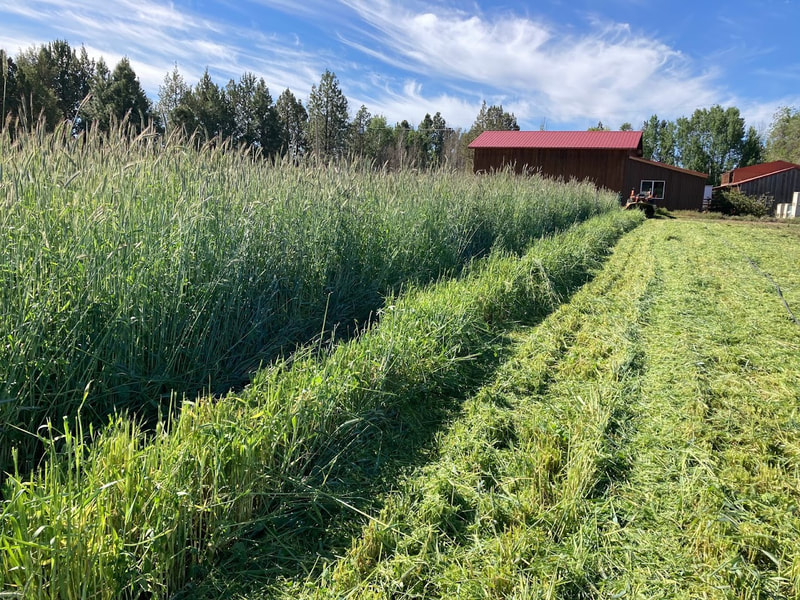
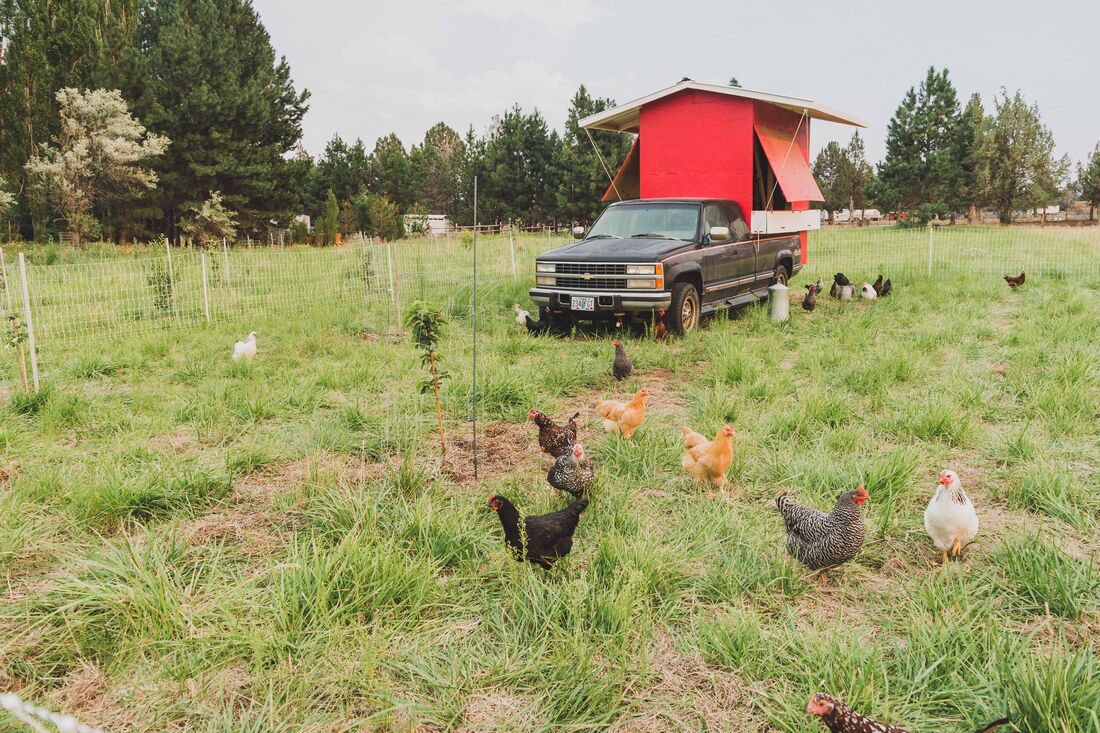
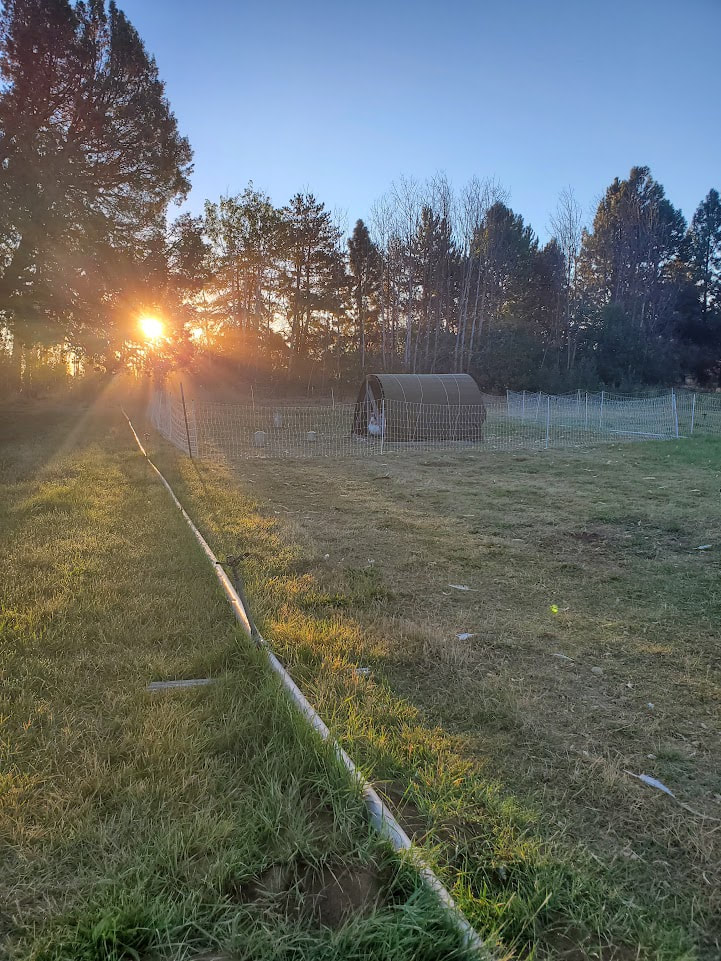
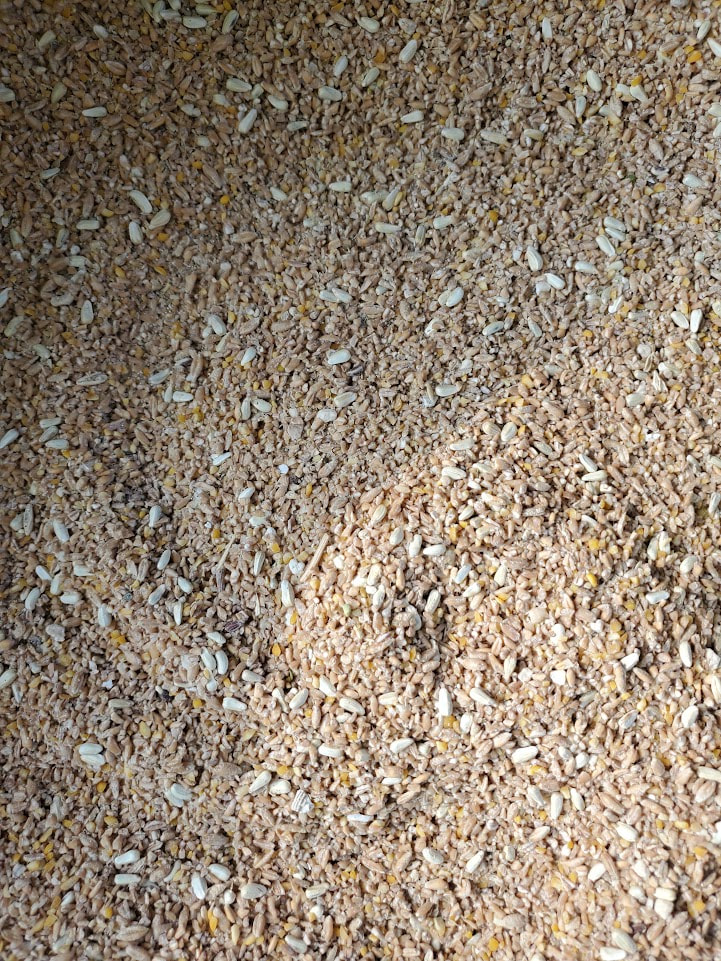
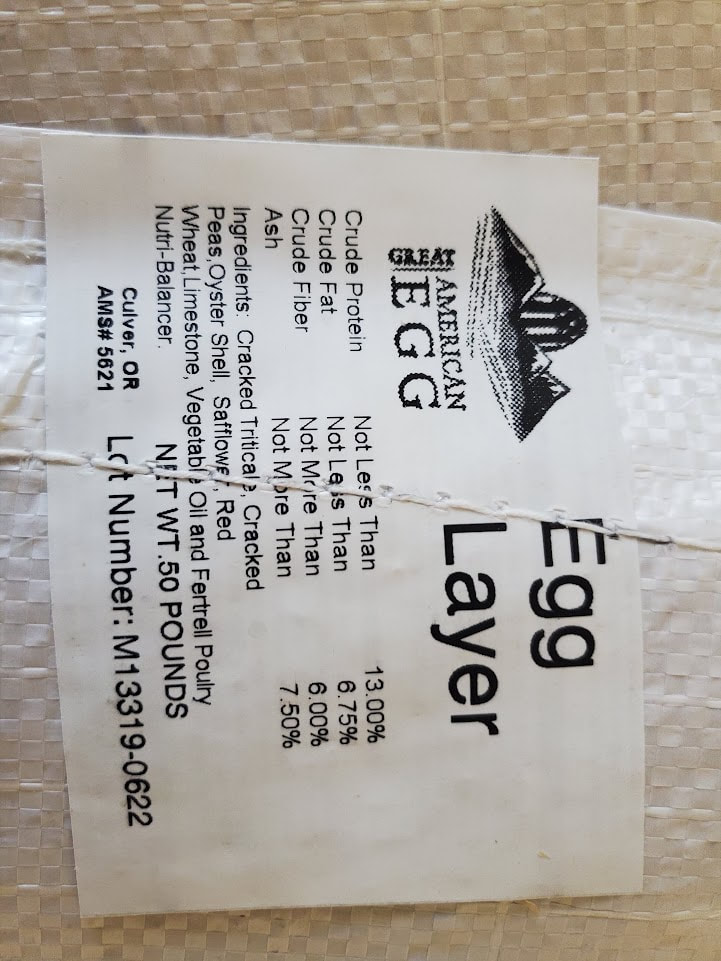
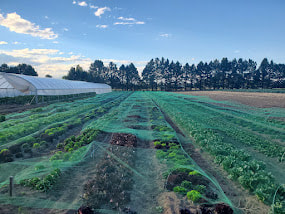
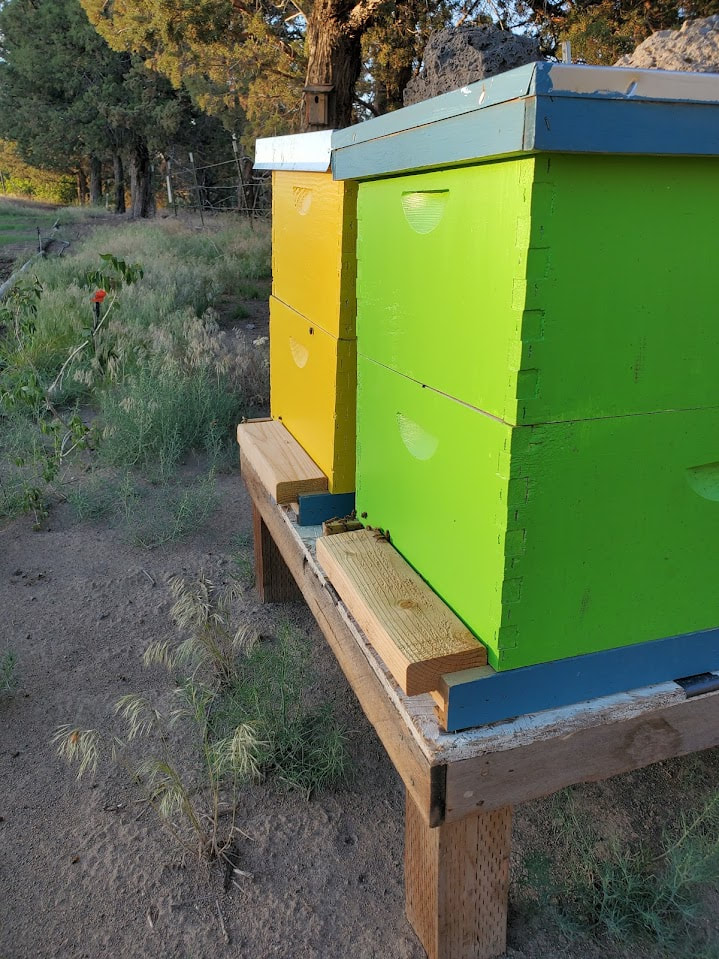
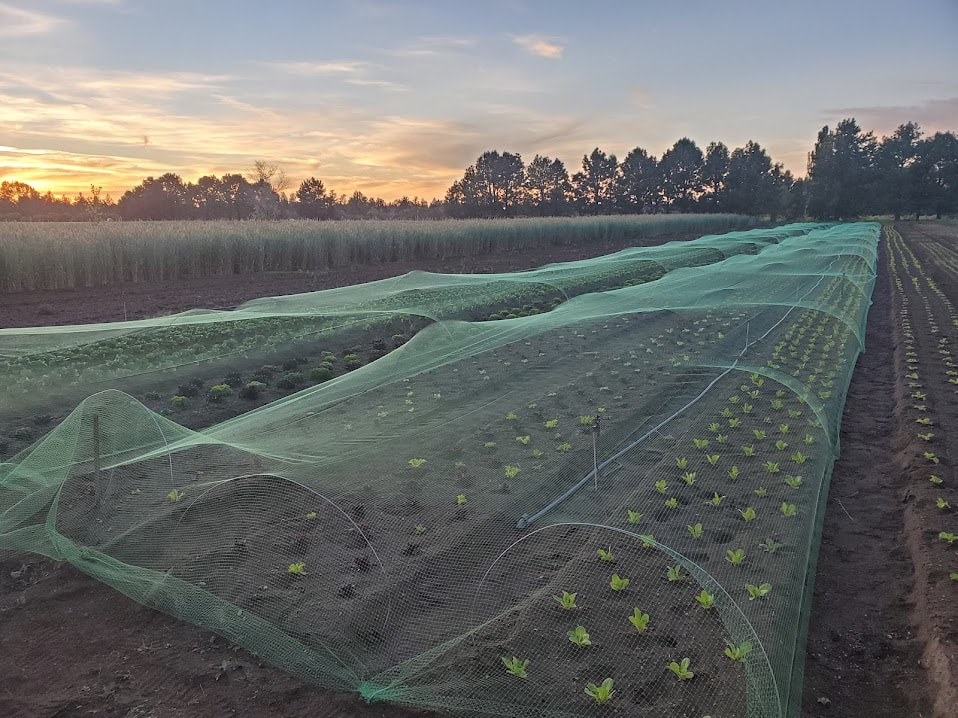
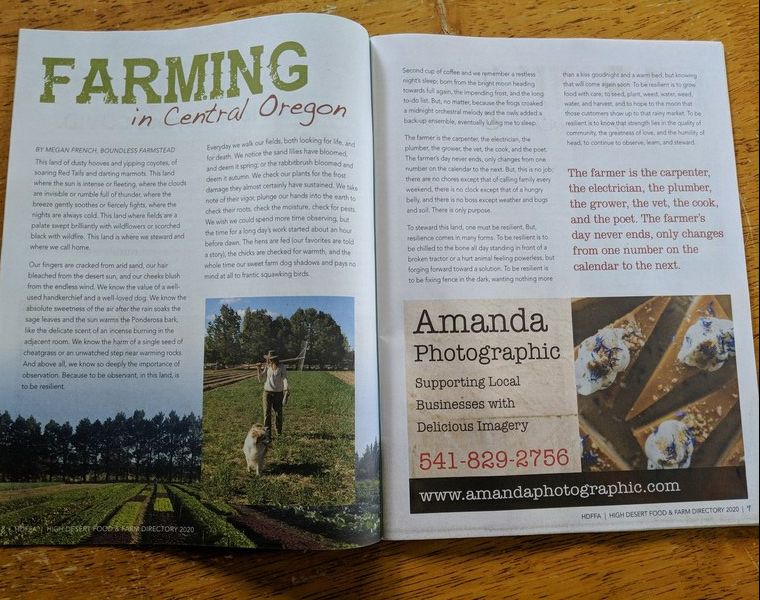
 RSS Feed
RSS Feed